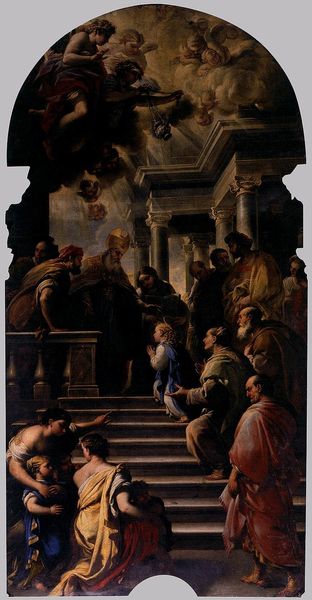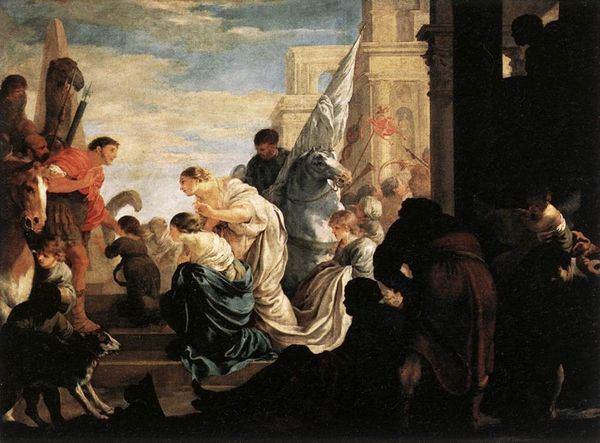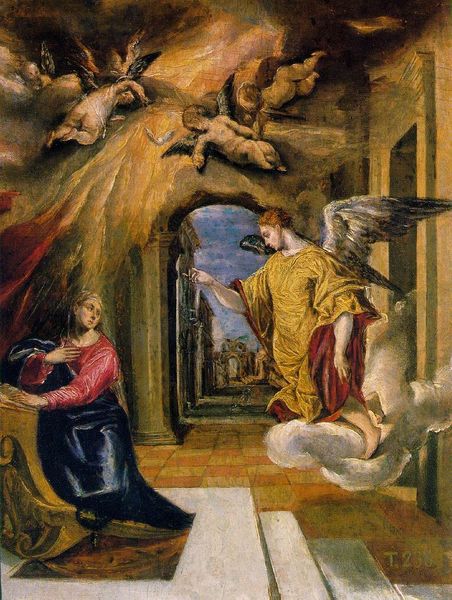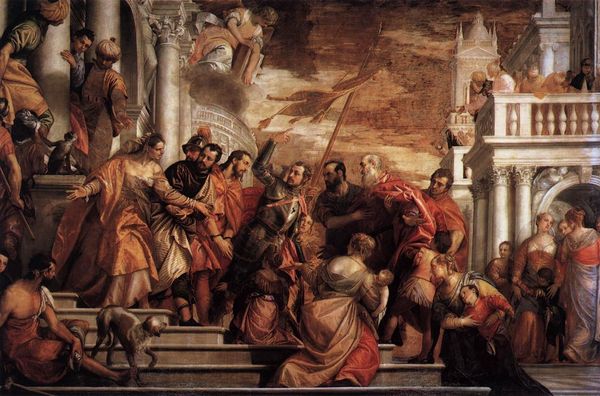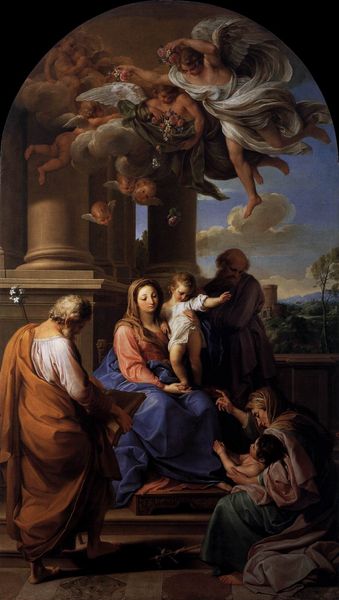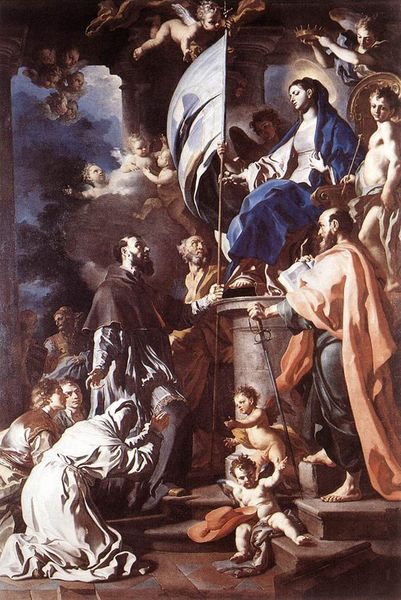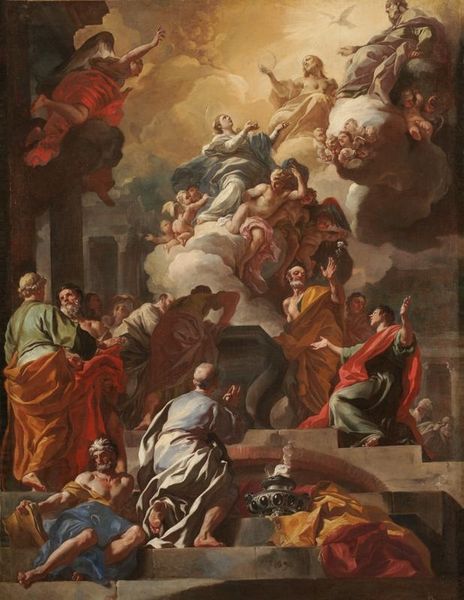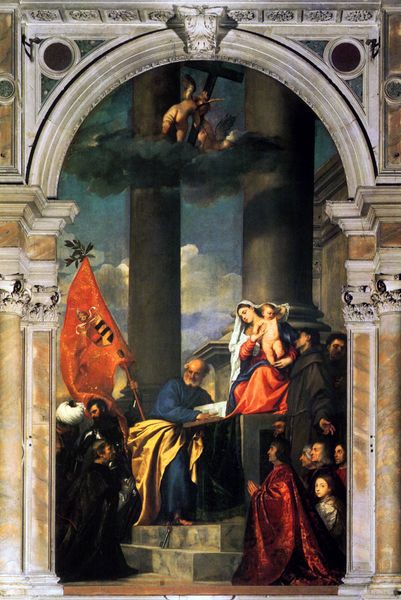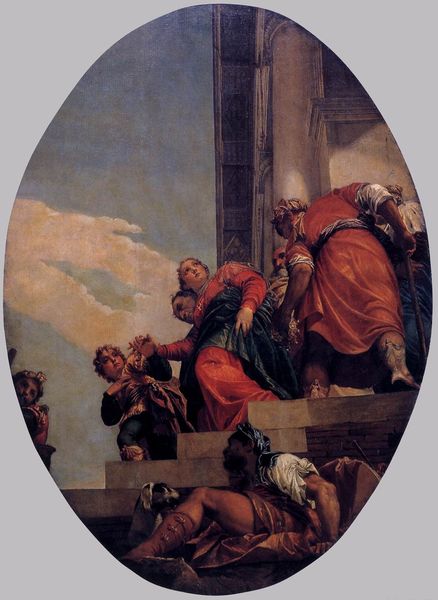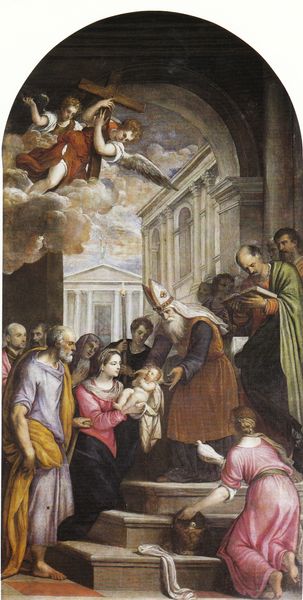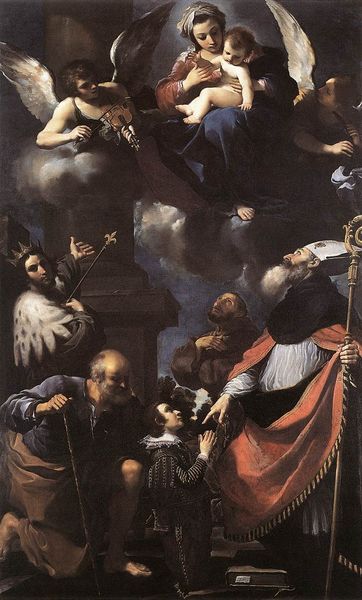
tempera, painting, oil-paint
#
venetian-painting
#
narrative-art
#
baroque
#
tempera
#
painting
#
oil-paint
#
figuration
#
christianity
#
history-painting
#
italian-renaissance
#
rococo
Dimensions: 101 x 222 cm
Copyright: Public domain
Editor: This is Giovanni Battista Tiepolo’s "Last Communion of St. Lucy," painted in 1748. The soft, diffused lighting and delicate colors create a serene, almost ethereal mood, despite the dramatic subject matter. How does this piece sit within its historical context? Curator: Tiepolo's Rococo style, as seen here, must be understood within the religious and political framework of 18th-century Venice. Religious commissions served not only as expressions of faith, but also as powerful statements of civic identity. Consider how Tiepolo's work operates in the theater of the church, reinforcing the Church's authority through emotional appeal and visual splendor. How might the scale of this painting contribute to its public function? Editor: I imagine the sheer size amplifies its impact, making it hard to ignore within a church setting. It practically demands reverence. Curator: Exactly. The size, combined with the theatrical presentation, places the viewer in the role of witness, complicit in both Lucy's sanctity and the historical narrative. Tiepolo isn't simply illustrating a scene; he's constructing a shared experience. Do you think the presence of angels or putti helps build this religious narrative and add social prestige for the viewers? Editor: The putti floating overhead certainly add to the dramatic flair. Thinking about it, the grand architecture makes it feel staged, more of a spectacle. Curator: Indeed. And consider who controlled those stages: the Church and its wealthy patrons. These lavish depictions weren't just about religious piety, but a reflection and performance of power. Now how does all of this help your view about the place and function of such historical artifacts in today's world? Editor: This has opened my eyes. I see now it's less about the individual artist's vision and more about the social and institutional forces at play in its creation and reception. Curator: Precisely! Art isn't created in a vacuum, but in dialogue with the world around it. This analysis offers crucial understanding.
Comments
No comments
Be the first to comment and join the conversation on the ultimate creative platform.
